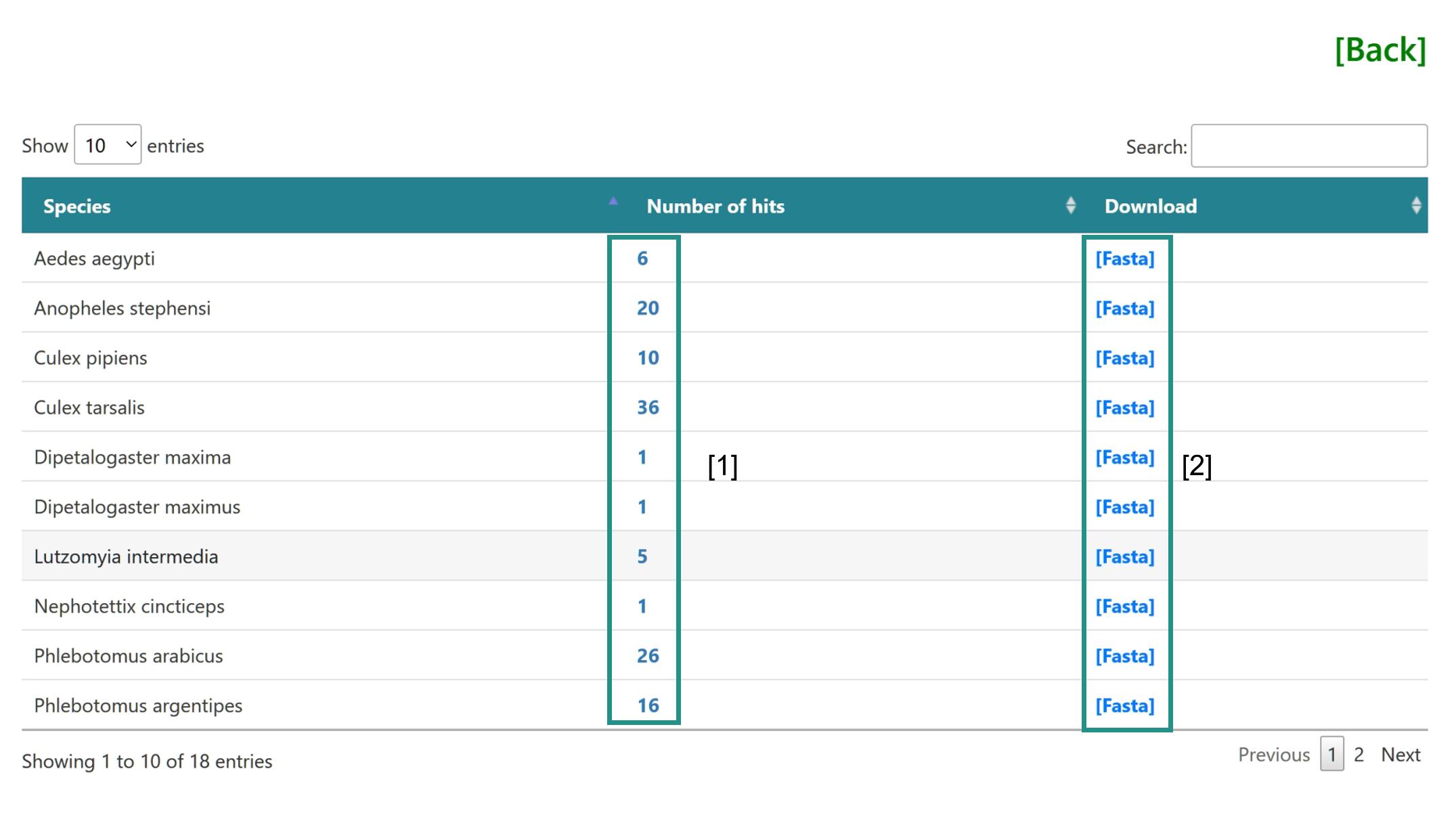Home
The insect salivary protein sequences and other functional information available on iSalivaomicDB are curated from literature and made accessible to the scientific community. The extensive collection of sequences and annotations provides valuable resources for researchers to explore the evolution of salivary genes and their applications. With its user-friendly interface and online tools, iSalivaomicDB facilitates easy retrieval of information for interested researchers.

Search
In the page, species can be selected from the species list. Some frequently studied protein names are displayed by frequency ranks and can be clicked to enter into the search box automatically. The search results are listed in a table and can be clicked to link to salivary protein entry card page.
Search Input

[1] Species list of insects in database.
[2] Enter the search terms.
[3] The frequent terms can be selected.
Search Output

[1] Click here to show the details of search results of the selected species.
[2] Click here to download the sequences directly.

[1] Click here to link to salivary protein card.
Browse
Salivary proteins are sorted by species and displayed on a dynamic tree. Upon clicking the species name, information such as the species name, taxonomy, brief introduction, and photos will be displayed on the right side.

[1] Click “+” to expand and click “-” to collapse. Select species to show all its salivary proteins.
[2] The basic information of selected species.
[3] Table lists all the salivary proteins of this species. It includes entry IDs, full names, short names and lengths.
Salivary Protein Card
All information for each salivary protein entry is displayed in a property-value card format. The first part of the page provides information on the source species, its taxonomy, physical properties (pI and MW). The annotation section displays the functions of the salivary protein. The position ranges of the signal peptide, propeptide, and mature protein sequence are presented in a table, along with the positions and types of PTMs. Users can download the protein and its corresponding reference nucleotide sequences in FASTA format from the sequence part. Additionally, cross-references to accessions from NCBI, UniProtKB, PDB, and other databases are available for users to view more details. Publications reporting the salivary protein with all relevant details are also accessible to interested readers.

Blast
Sequence similarity is a crucial factor in retrieving proteins or genes when only partial sequences are available for searching homologues. Diamond software, known for its high speed, will be activated upon receiving user commands. To search for proteins, the blastp and blastx algorithms within the software are sufficient to accomplish all tasks. Similarly, the blast results are presented in a table format, with accompanying scores for each row of the results.
Blast Input

[1] Paste your fasta format sequences into the box.
[2] Or input the search sequence file here.
[3] Choose the blast program and the p value.
Blast Output

The page show the blast result list.
CHR-LOCI
Salivary genes are typically acquired through gene duplication and other mechanisms. Consequently, the chromosomal locations of salivary genes play a vital role in studying their evolutionary patterns. In certain insects with genome assemblies at the chromosome level, the positions of salivary genes are indicated on the corresponding loci. Users have the option to select their desired species from the list of available options. Clicking on a specific gene will redirect users to the corresponding entry card page for more detailed information.

[1] Choose the species list with chromosome level assembly with salivary gene on it.
[2] Click the salivary gene on chromosome to show the salivary protein detail.
PRO-FAMILY
All representative protein families are visualized using donut charts, where the size of each area represents the proportion of genes within that family. By clicking on a specific protein family, users can access the corresponding phylogenetic tree for further examination.
PRO-FAMILY

[1] Each donut chart represent a salivary protein family.
[2] The number shows the total number of salivary protein in the selected family.
[3] Click here to show the phylogenetic tree of the selected protein family.
Phylogenetic Tree

[1] The phylogenetic tree of the selected family. The salivary genes are displayed on the tree and can be linked to the entry card page.
[2] The basic information of the selected family.
Download

Links

The page list all the related databases and introductions.
